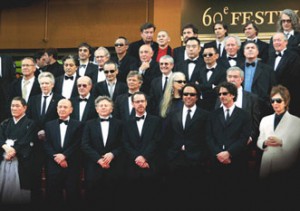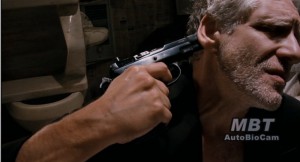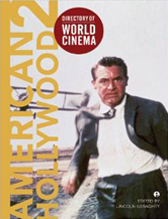
REVIEW: To Each His Own Cinema
This year, as part of its 60th anniversary, the Cannes Film Festival sought out over thirty directors from around the globe to produce a short film of three minutes in length on the theme of ‘the cinema’. The resultant product, To Each His Own Cinema, is both a showcase of the film industry’s talents (both past and present), and a rumination on the changing face and place of cinema today.
 Not surprisingly, given the film’s subject matter, there are inevitable similarities that cut across the various shorts, particularly the depiction of the cinema as a space of communal gathering – strangers grouped together in the dark around a single screen – and as a place of deeply felt personal experience through the identification with those images. This theme is evident from the opening short, Raymond Depardon’s “Cinema d’Eté”, which details the preparation of a rooftop cinema while darkness falls, the crowd shuffles in, and the projector springs to life, and in Abbas Kiarostami’s “Where is my Romeo?”, a film comprised simply of cuts between the teary faces of spectators enthralled by a screening of ‘Romeo & Juliet’.
Not surprisingly, given the film’s subject matter, there are inevitable similarities that cut across the various shorts, particularly the depiction of the cinema as a space of communal gathering – strangers grouped together in the dark around a single screen – and as a place of deeply felt personal experience through the identification with those images. This theme is evident from the opening short, Raymond Depardon’s “Cinema d’Eté”, which details the preparation of a rooftop cinema while darkness falls, the crowd shuffles in, and the projector springs to life, and in Abbas Kiarostami’s “Where is my Romeo?”, a film comprised simply of cuts between the teary faces of spectators enthralled by a screening of ‘Romeo & Juliet’.
This emphasis on the audience over the screened image recurs within other shorts such as Zhang Yimou’s excellent “En Regardant le Film”, which details a young boys fascination with a travelling projectionist that comes to his village, and Andrei Konchalovsky’s “Dans le Noir”, where an aged cinema owner watches repeated screenings of Fellini’s Otto e Mezzo while a pair of over-stimulated youths make out in the back rows, oblivious to the film.
While many of the shorts focus on the cinema as a space of love, desire, theft, sadness, and loss, there’s also a decidedly political edge to a number of the films. Atom Egoyan’s, “Artaud Double Bill” centres of two youths text messaging each other from their respective cinemas, while images from Dreyer’s The Passion of Joan of Arc are reduced to the screen of a mobile phone. The apparent death of cinema by technology is even more apparent in David Cronenberg’s darkly satirical, “At the Suicide of the Last Jew in the World in the Last Cinema in the World” in which the director plays a man about to ‘off himself’ in the toilets of a dilapidated movie house, the images beamed live via television.
 The sole local entrant, Jane Campion’s “The Lady Bug” also treads a politicised line, offering a pointed (and relevant, given the near absence of female directors from the collection) critique of gender relations within the film industry.
The sole local entrant, Jane Campion’s “The Lady Bug” also treads a politicised line, offering a pointed (and relevant, given the near absence of female directors from the collection) critique of gender relations within the film industry.
But beyond the nostalgic and the saccharine, the political and the social commentaries, To Each His Own Cinema also provides some welcome moments of humour. Roman Polanski’s, “Cinéma Erotique” plays out like an adaptation of a well-told joke, Takeshi Kitano cameos as a bumbling projectionist in his short, “One Fine Day”, while Lars Von Trier’s “Occupations” – possibly my favourite of the bunch – sees the director meting out his own style of violent justice on a talkative audience member.
Like other recent ‘collaborative’ features such as 11’09’’01 and Paris, Je T’aime, not all of the segments in To Each His Own Cinema are entirely successful. Youssef Chahine’s “47 Ans Après” comes off as a gratuitous ode to himself, while the contributions by Amos Gitai (“Le Dibbouk de Haifa”) and Olivier Assayas (“Recrudescence”) are both clunky additions that fall short of the generally high standard of filmmaking on show.
Yet, in spite of its minor weaknesses, there remains something undeniably appealing about a work of cinema devoted entirely to the expression of love for the medium, particularly for those audience members whose passion for film may run as deep it does for these directors.





RSS feed for comments on this post. TrackBack URI